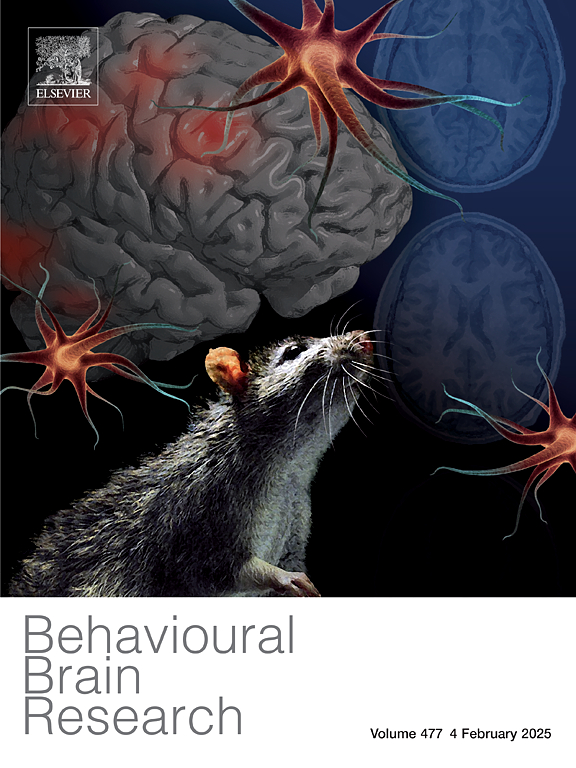Machine learning approach to DNA methylation and neuroimaging signatures as biomarkers for psychological resilience in young adults
IF 2.3
3区 心理学
Q2 BEHAVIORAL SCIENCES
引用次数: 0
Abstract
Psychological resilience is influenced by both psychological and biological factors. However, the potential of using DNA methylation (DNAm) probes and brain imaging variables to predict psychological resilience remains unclear. This study aimed to investigate DNAm, structural magnetic resonance imaging (sMRI), and diffusion tensor imaging (DTI) as biomarkers for psychological resilience. Additionally, we evaluated the ability of epigenetic and imaging markers to distinguish between individuals with low and high resilience using machine learning algorithms. A total of 130 young adults assessed with the Connor–Davidson Resilience Scale (CD-RISC) were divided into high and low psychological resilience groups. We utilized two feature selection algorithms, the Boruta and variable selection using random forest (varSelRF), to identify important variables based on nine for DNAm, sixty-eight for gray matter volume (GMV) measured with sMRI, and fifty-four diffusion indices of DTI. We constructed machine learning models to identify low resilience individuals using the selected variables. The study identified thirteen variables (five DNAm, five GMV, and three DTI diffusion indices) from feature selection methods. We utilized the selected variables based on 10-fold cross validation using four machine learning models for low resilience (AUC = 0.77–0.82). In interaction analysis, we identified cg03013609 had a stronger interaction with cg17682313 and the rostral middle frontal gyrus in the right hemisphere for psychological resilience. Our findings supported the concept that DNAm, sMRI, and DTI signatures can identify individuals with low psychological resilience. These combined epigenetic imaging markers demonstrated high discriminative abilities for low psychological resilience using machine learning models.
DNA甲基化和神经成像特征的机器学习方法作为年轻人心理弹性的生物标志物
心理弹性受心理和生理因素的双重影响。然而,使用DNA甲基化(DNAm)探针和脑成像变量预测心理弹性的潜力仍不清楚。本研究旨在探讨DNAm、结构磁共振成像(sMRI)和扩散张量成像(DTI)作为心理弹性的生物标志物。此外,我们使用机器学习算法评估了表观遗传和成像标记区分低弹性和高弹性个体的能力。采用康诺-戴维森心理弹性量表(CD-RISC)对130名青少年进行心理弹性测试,并将其分为高弹性组和低弹性组。利用Boruta和随机森林变量选择(varSelRF)两种特征选择算法,基于9个DNAm、68个sMRI测量的灰质体积(GMV)和54个DTI扩散指数来识别重要变量。我们构建了机器学习模型,使用选定的变量来识别低弹性个体。研究从特征选择方法中确定了13个变量(5个DNAm、5个GMV和3个DTI扩散指数)。我们使用四种机器学习模型对低弹性(AUC = 0.77-0.82)进行10倍交叉验证,从而利用所选变量。通过相互作用分析,我们发现cg03013609与cg17682313和右半球额叶中吻回在心理弹性方面具有更强的相互作用。我们的研究结果支持了DNAm、sMRI和DTI特征可以识别低心理弹性个体的概念。使用机器学习模型,这些组合的表观遗传成像标记显示出对低心理弹性的高辨别能力。
本文章由计算机程序翻译,如有差异,请以英文原文为准。
求助全文
约1分钟内获得全文
求助全文
来源期刊

Behavioural Brain Research
医学-行为科学
CiteScore
5.60
自引率
0.00%
发文量
383
审稿时长
61 days
期刊介绍:
Behavioural Brain Research is an international, interdisciplinary journal dedicated to the publication of articles in the field of behavioural neuroscience, broadly defined. Contributions from the entire range of disciplines that comprise the neurosciences, behavioural sciences or cognitive sciences are appropriate, as long as the goal is to delineate the neural mechanisms underlying behaviour. Thus, studies may range from neurophysiological, neuroanatomical, neurochemical or neuropharmacological analysis of brain-behaviour relations, including the use of molecular genetic or behavioural genetic approaches, to studies that involve the use of brain imaging techniques, to neuroethological studies. Reports of original research, of major methodological advances, or of novel conceptual approaches are all encouraged. The journal will also consider critical reviews on selected topics.
 求助内容:
求助内容: 应助结果提醒方式:
应助结果提醒方式:


